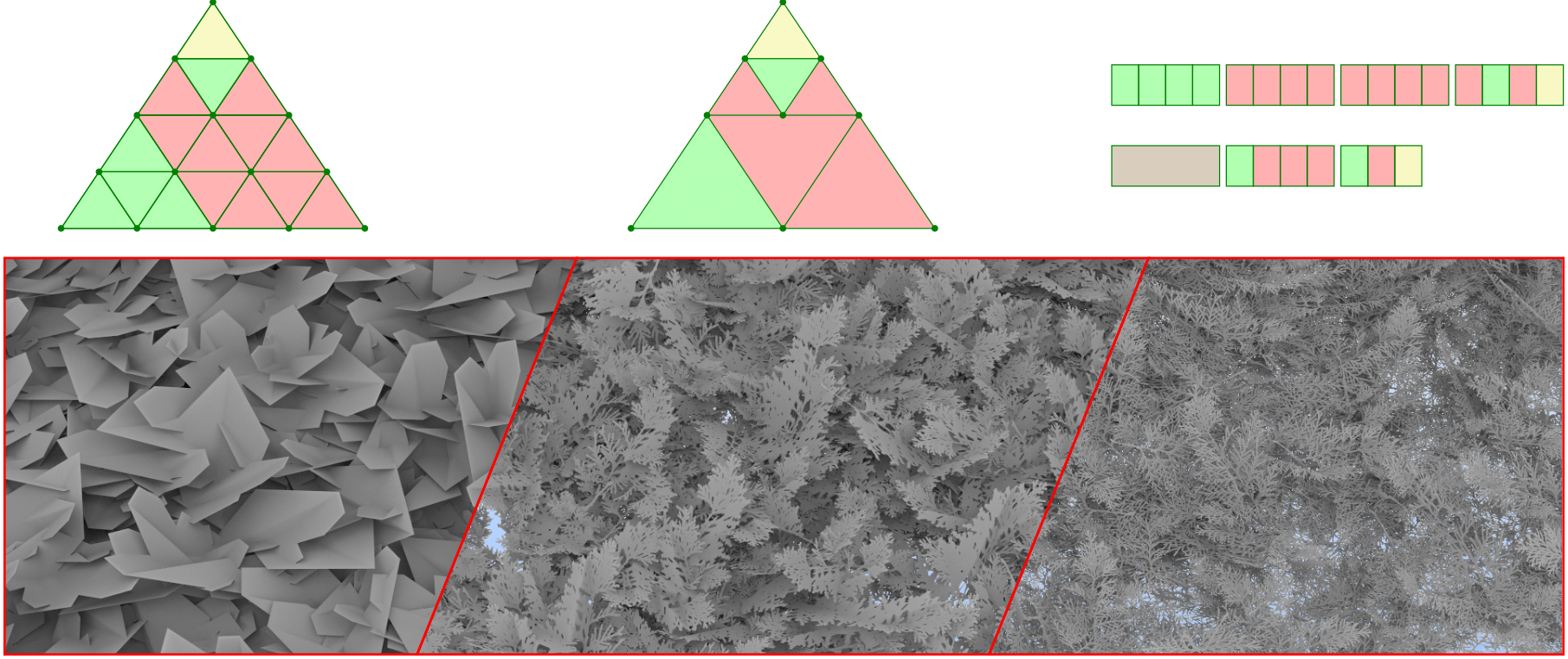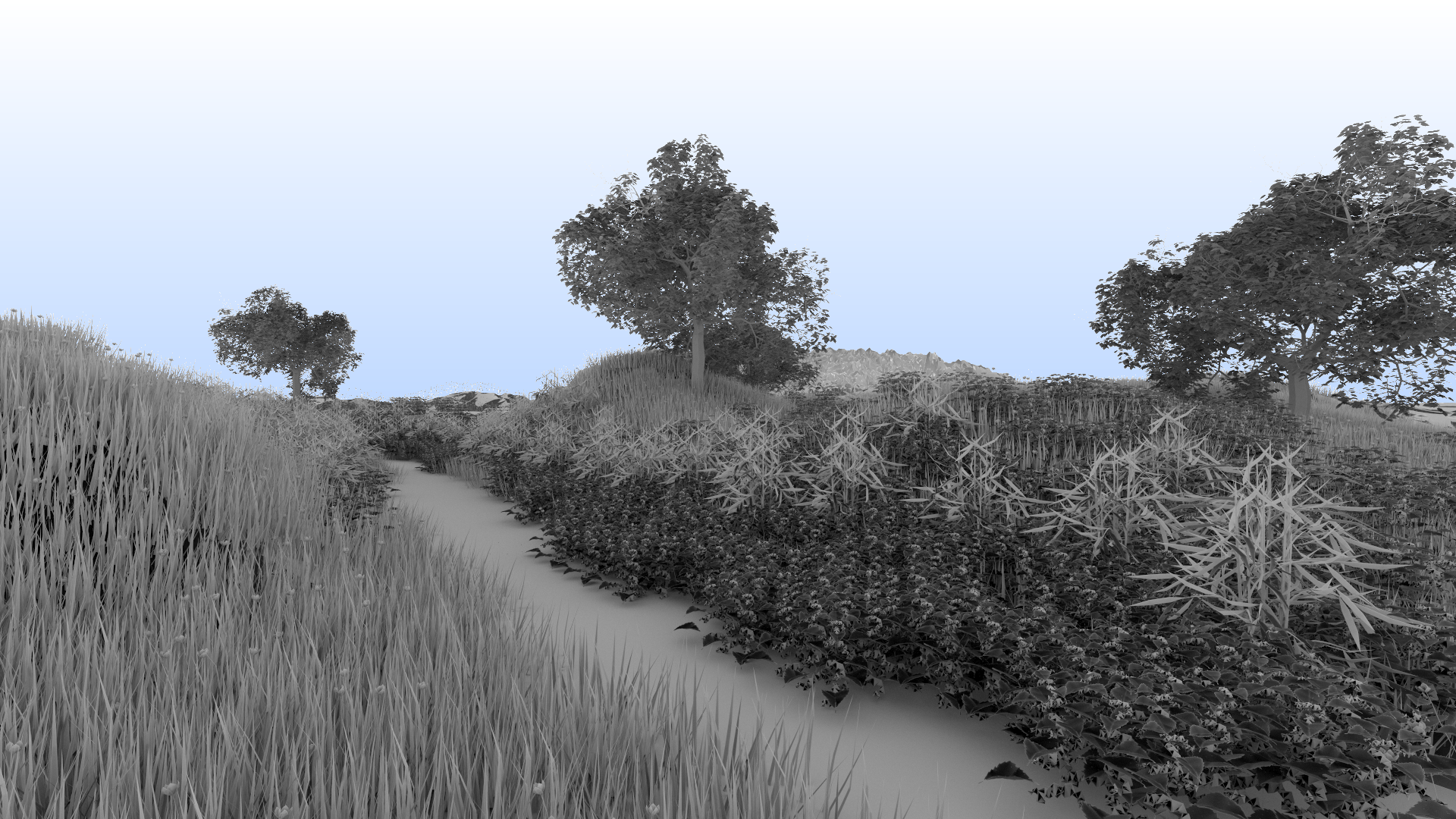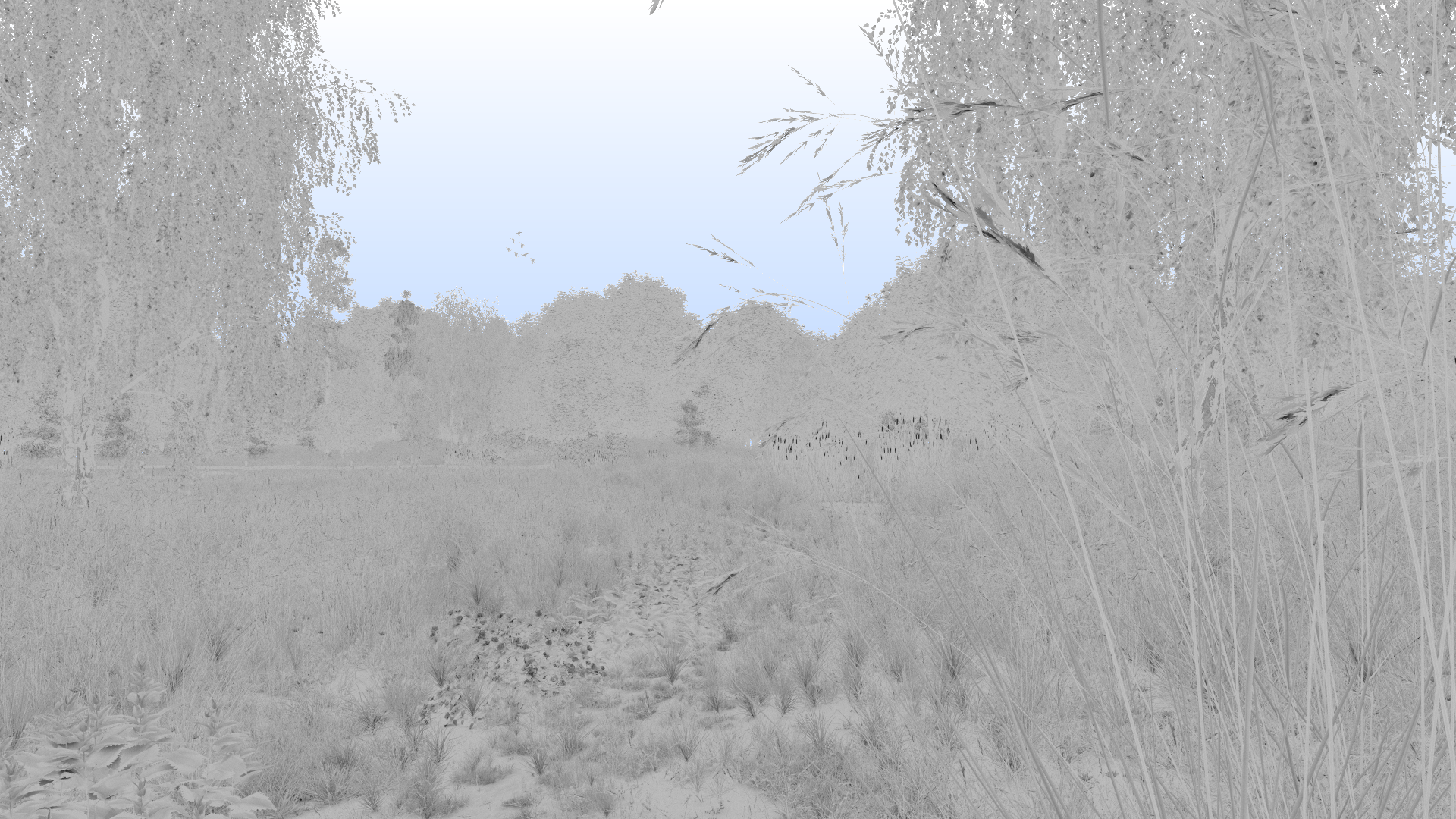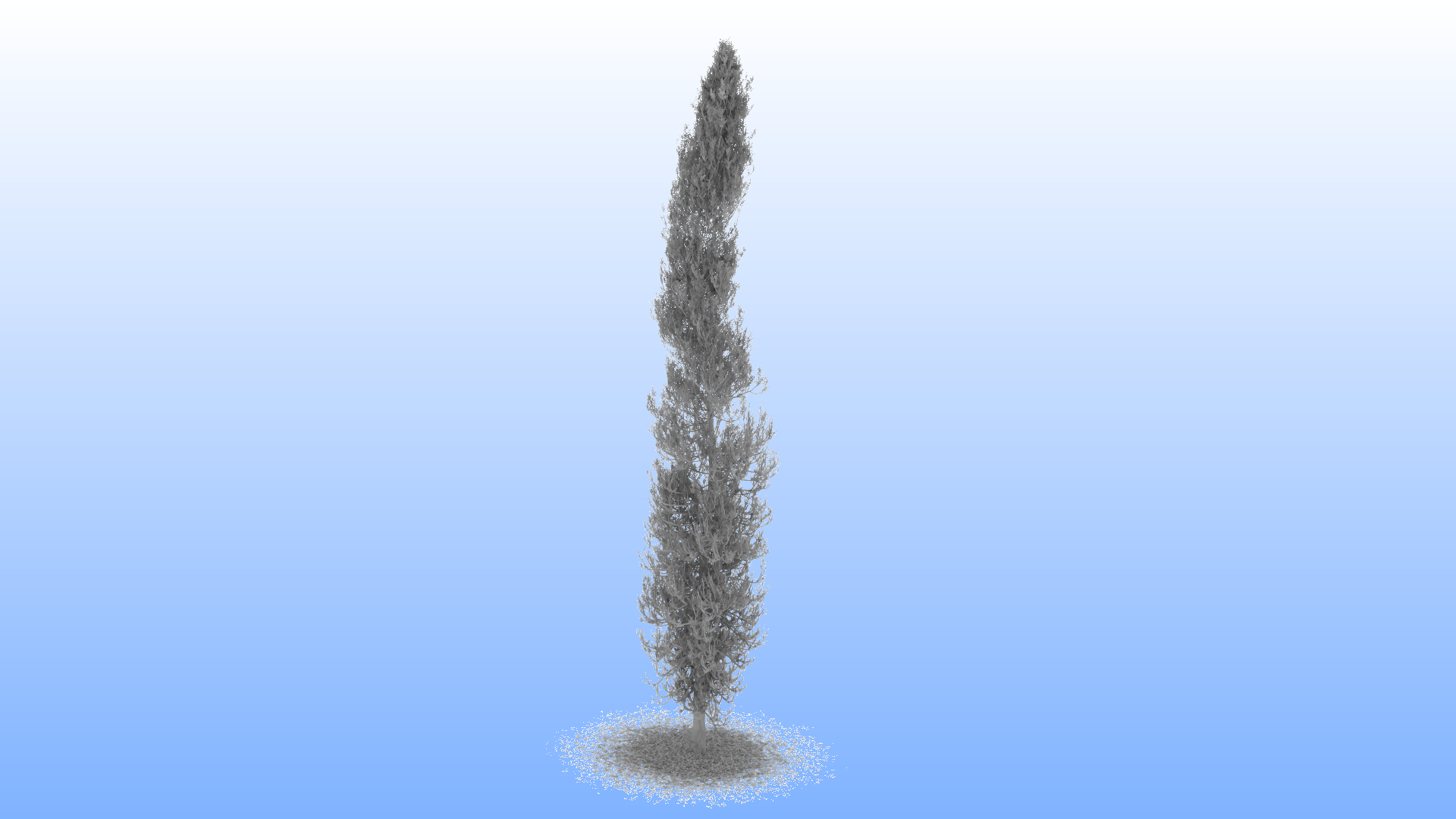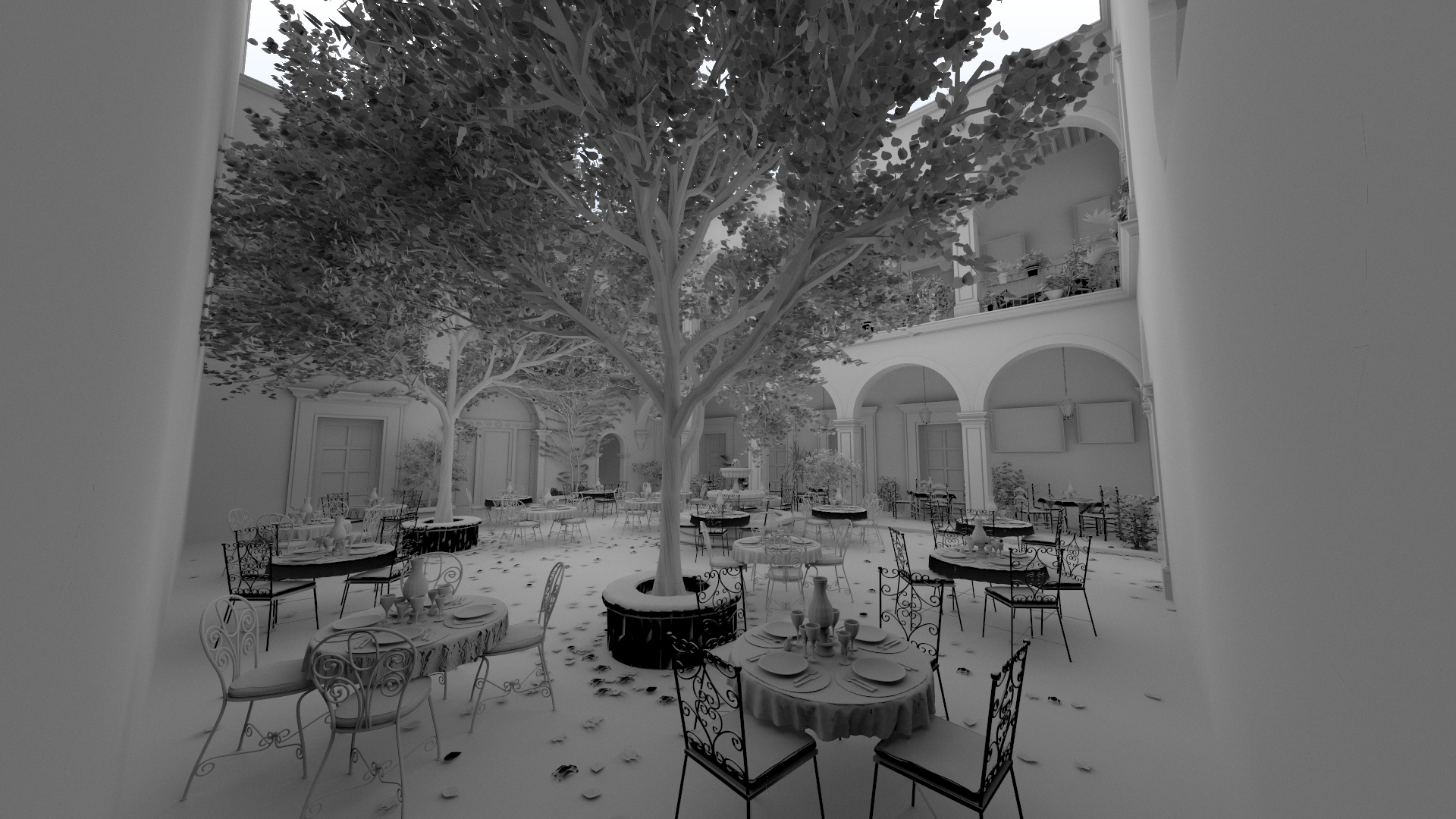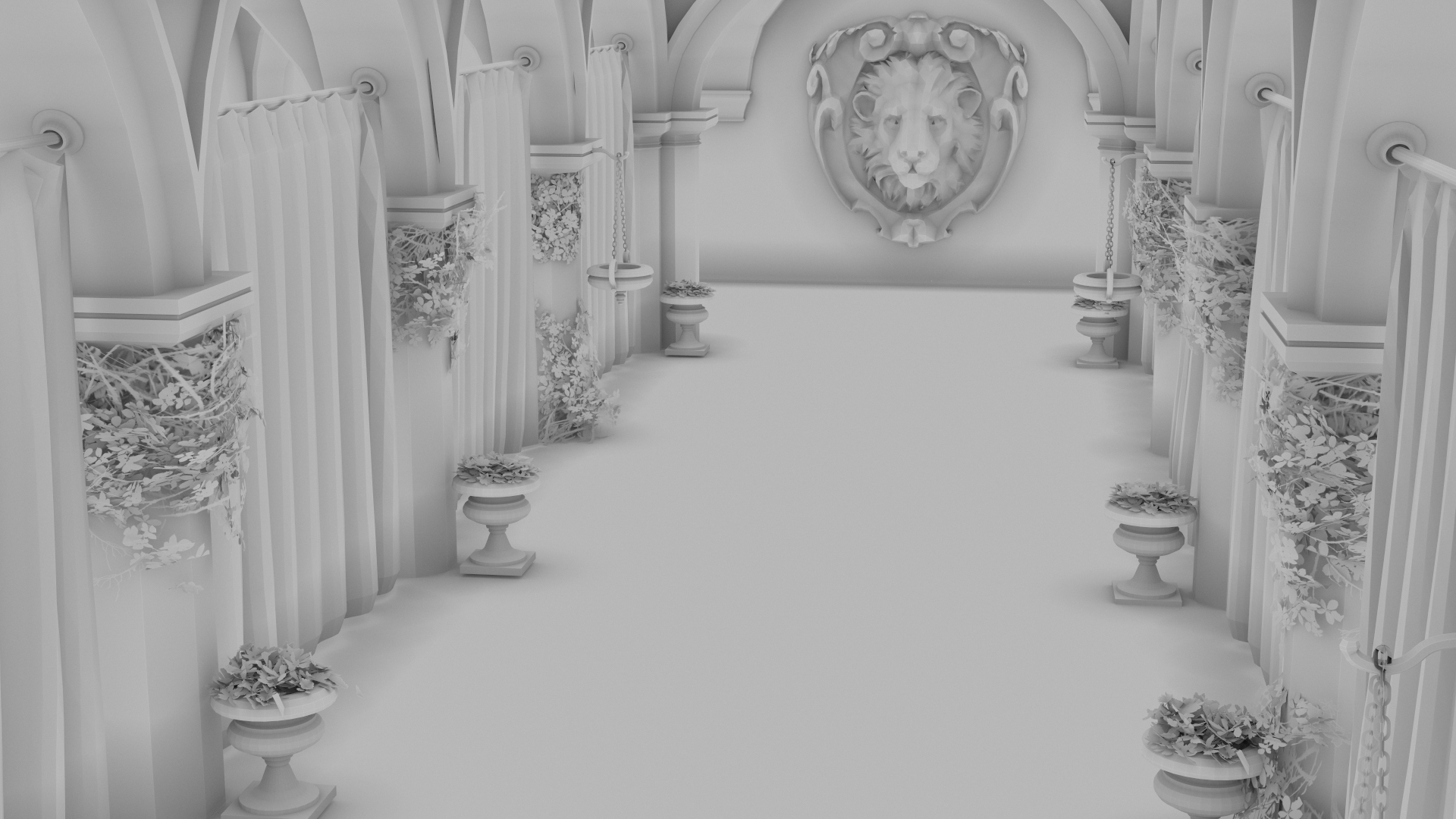Succinct Opacity Micromaps
High-Performance Graphics, July 2024
Abstract
Alpha masked geometry such as foliage has long been one of the trickier things to render efficiently, both for rasterization based approaches and for hardware accelerated ray-tracing. Recently, a new type of primitive was introduced to the Vulkan® and DirectX® ray-tracing APIs that promises to alleviate this issue: Opacity Micromaps, a structure that uses a bit of extra memory as hints to the pipeline when it should actually call the AnyHit-shader. In this paper, we extend this primitive with a novel compression method that uses the concept of succinct 4-way trees to reduce the memory footprint by up to 110 times, including an algorithm for looking up micromap values directly from this compressed form. Further, we perform a comprehensive analysis of the generated micromaps to demonstrate their performance in terms of both memory footprint and frame render time compared to a number of similar structures. Finally, we highlight some aspects of the extension that developers and artists should be aware of to make the most out of it.
Downloads and Links
- DOI - https://dl.acm.org/doi/10.1145/3675385
- PDF - Authors' version of the paper
- PDF - Authors' version of the supplemental material
- VID - Fast-Forward
- VID - HPG24 Presentation
- PDF - HPG24 presentation slides
- PDF - HPG24 presentation slides with notes
BibTeX entry
@article{10.1145/3675385,
author = {Waldemarson, Gustaf and Doggett, Michael},
title = {Succinct Opacity Micromaps},
year = {2024},
issue_date = {August 2024},
publisher = {Association for Computing Machinery},
address = {New York, NY, USA},
volume = {7},
number = {3},
url = {https://doi.org/10.1145/3675385},
doi = {10.1145/3675385},
abstract = {Alpha masked geometry such as foliage has long been one of the
trickier things to render efficiently, both for rasterization
based approaches and for hardware accelerated
ray-tracing. Recently, a new type of primitive was introduced
to the Vulkan® and DirectX® ray-tracing APIs that promises to
alleviate this issue: Opacity Micromaps, a structure that uses
a bit of extra memory as hints to the pipeline when it should
actually call the AnyHit-shader. In this paper, we extend this
primitive with a novel compression method that uses the
concept of succinct 4-way trees to reduce the memory footprint
by up to 110 times, including an algorithm for looking up
micromap values directly from this compressed form. Further,
we perform a comprehensive analysis of the generated micromaps
to demonstrate their performance in terms of both memory
footprint and frame render time compared to a number of
similar structures. Finally, we highlight some aspects of the
extension that developers and artists should be aware of to
make the most out of it.},
journal = {Proc. ACM Comput. Graph. Interact. Tech.},
month = {aug},
articleno = {45},
numpages = {18},
keywords = {Compression, Opacity Micromaps, Ray Tracing}
}
